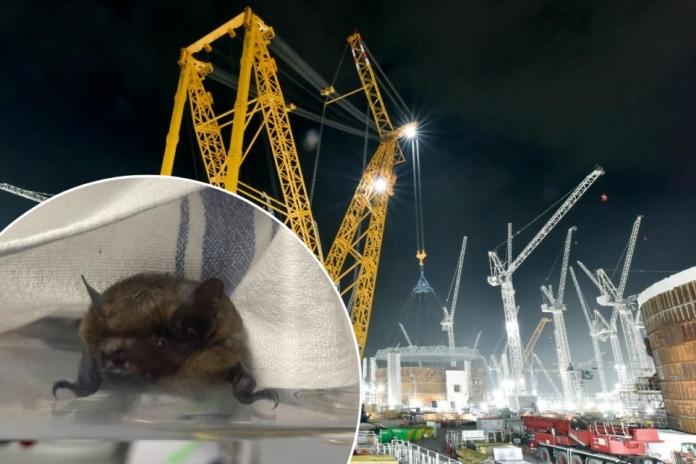Burnham-On-Sea wildlife carers at Secret World Wildlife Rescue are this week looking after a bat that has been found grounded next to Hinkley Point C power station this week, ‘likely due to the significant light pollution’ in the area.
The serotine bat was taken to Secret World Wildlife Rescue at East Huntspill, where carers say the bat has no visible injuries, but was left disorientated.
A Secret World spokesperson says: “He was quite disoriented, likely due to the significant light pollution in the area.”
“Research shows that artificial light can disrupt bat foraging behaviour and navigation, making it harder for them to find food and shelter. In fact, studies indicate that light pollution can reduce bat activity by up to 80% in affected areas.”
In Britain, all bat species and their roosts are legally protected, by both domestic and European legislation. Provisions were made by EDF to ensure the protection of bats, including a bat underpass on the Cannington Bypass.
In addition, 2.5km of bat flyways and a bat barn were constructed by the National Grid close to the Hinkley Connection Project, which is a 400kV overhead power line.
Secret World says: “Some of the more sensitive species, such as the myotis and horseshoe bats, won’t cross a lit area, which can effectively trap them in an area, or in their roost. This can limit foraging areas, reduce food, cause starvation, and disorientation. It is important to keep an eye out for any bats that appear to be struggling, also consider low level lighting or red lighting where possible as this has a lesser impact.”
The serotine bat is one of Britain’s largest bat species and usually one of the first to appear in the evening, often emerging in good light, says the Bat Conservation Trust. It adds that serotine bats roost usually in buildings with high gables and cavity walls. They can be found in much older buildings and churches but are less often found in modern buildings.







